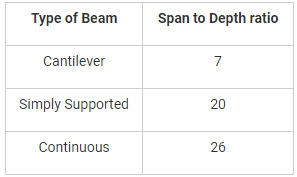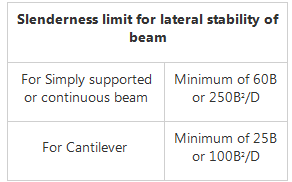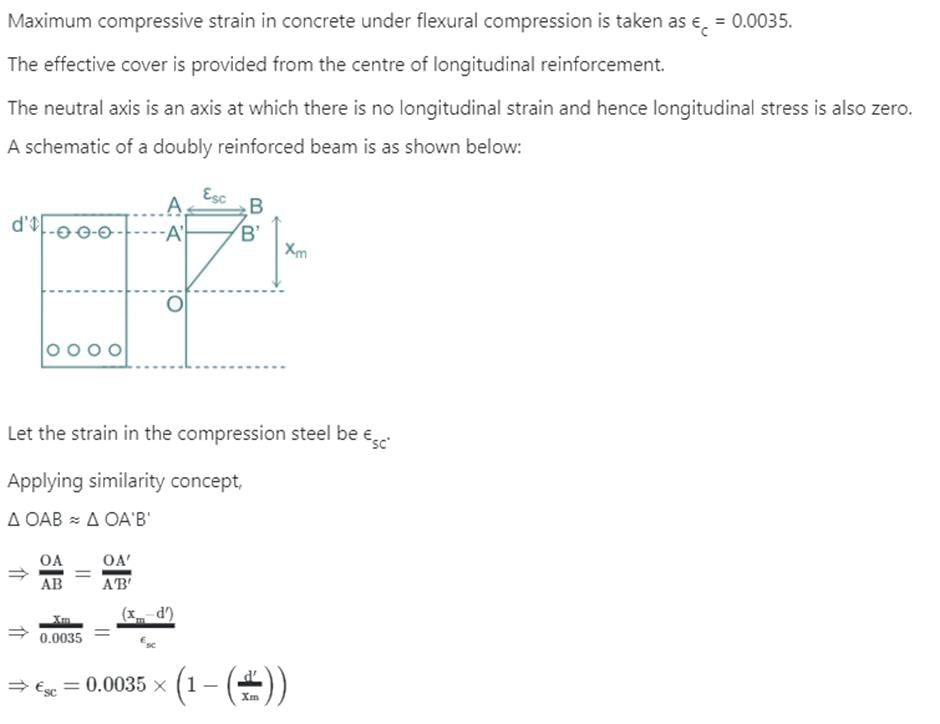Test: RCC- 2 - Civil Engineering (CE) MCQ
20 Questions MCQ Test Civil Engineering SSC JE (Technical) - Test: RCC- 2
If the permissible compressive and tensile stresses in a single reinforced beam are 50 kg/cm2 and 1400 kg/cm2 respectively and the modular ratio is 18, the percentage of the steel required for an economic section, is
Though the effective depth of a T-beam is the distance between the top compression edge to the centre of the tensile reinforcement, for heavy loads it is taken as:
If the diameter of main reinforcement in a slab is 16 mm, the concrete cover to main bar according to IS 456:2000 is:
__________ is the type of concrete in which internal stresses are intentionally induced in a planned manner such that the stresses resulting from the superimposed loads get counteracted to a desired degree.
Span to effective depth ratio for a continuous beam with steel grade of Fe 415 should not be more than: -
The time in minutes, for the member to reach the limit state of structural inadequacy in a standard fire test is known as:
The clear distance from the free end of the cantilever to the lateral restraint shall not exceed
For a square column, b × b in size, effective depth of the footing being ‘d’, the punching shear is calculated for an area
The Design ultimate load on the short axially loaded column is computed by which of the following equation?
where,
fck = Characterstics strength of concrete
fy = characterstic strength of steel
Ac = Area of concrete in column cross-section
Asc = Area of steel in column in compression
For a continuous slab of 3 m × 3.5 m size, the minimum overall depth of slab to satisfy vertical deflection limits for the grade of steel FE415 is-
In a rear counterfort retaining wall, the main reinforcement is provided on the
In a RCC beam of breadth b and overall depth D exceeding 750 mm, side face reinforcement required and the allowable area of maximum tension reinforcement shall be respectively
In R.C footing on soil, the thickness at the edge should not be less than
A doubly reinforced concrete beam has effective cover d’ to the centre of compression reinforcement. ‘xu’ is the depth of neutral axis, and d is the effective depth to the centre of tension reinforcement. What is the maximum strain in concrete at the level of compression reinforcement?
A reinforced concrete slab is 128 mm thick. The maximum size of reinforcement bar that can be used is:
|
2 videos|133 docs|55 tests
|






















